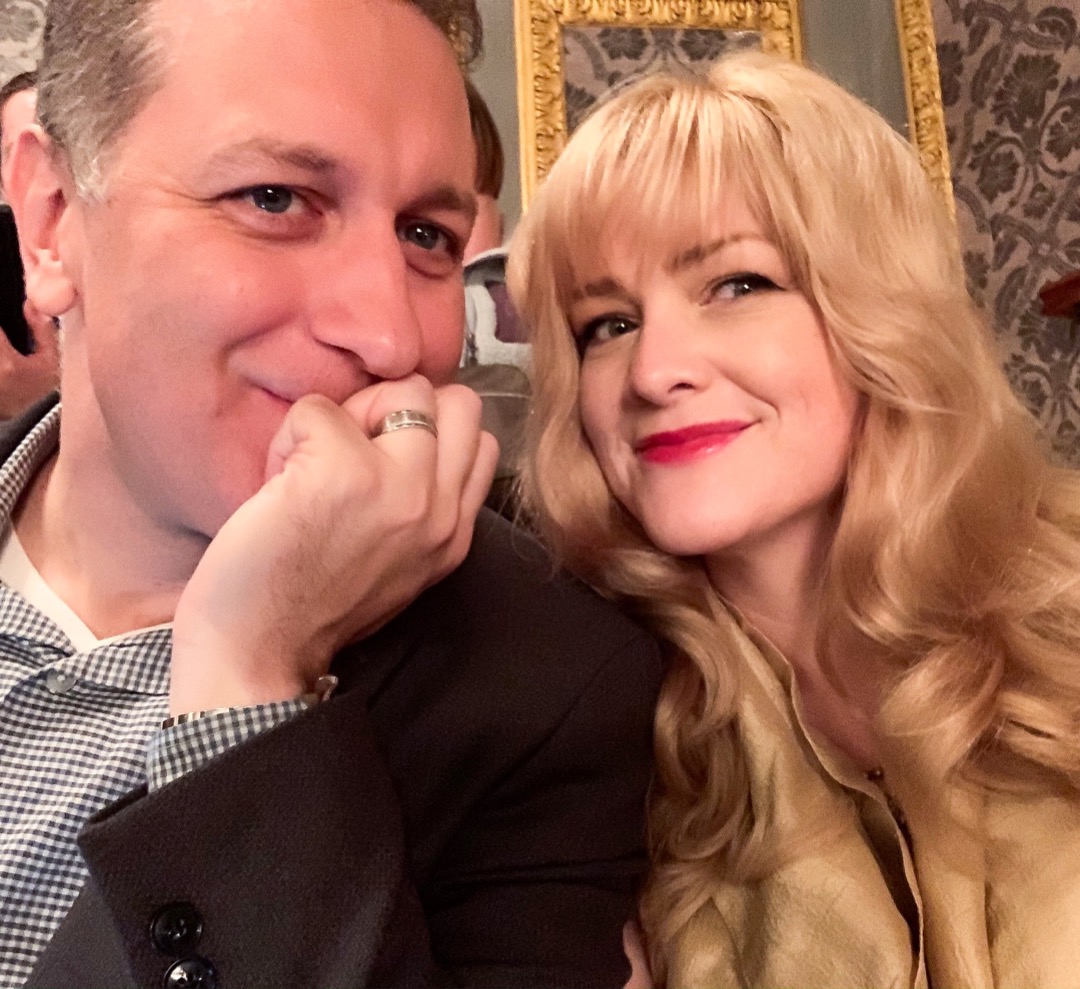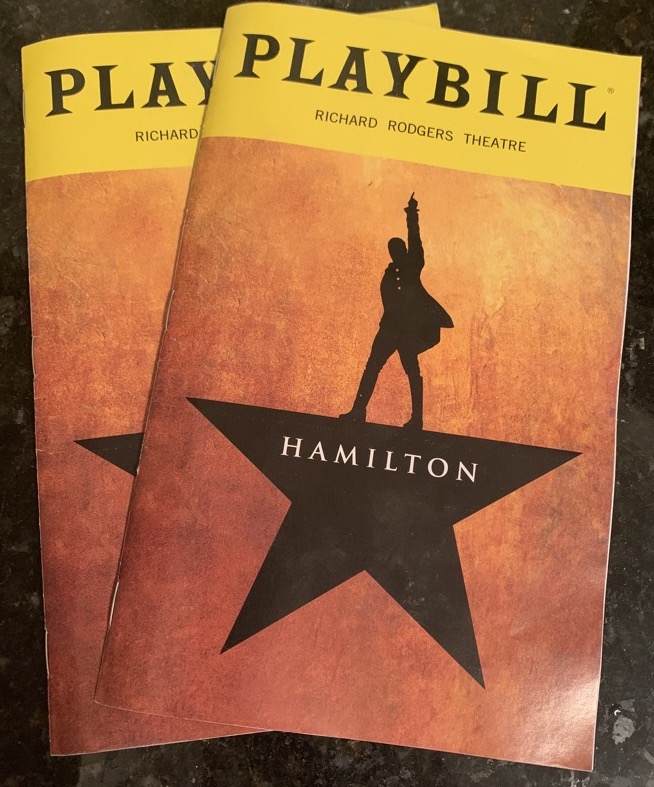Seeing "Hamilton" the Musical
- 5 minutes read - 1026 wordsOftentimes in life, there are those events that are so grand-seeming that you assume they’re for someone else. I’d slot things like “Meeting Paul McCartney” or “Getting a skybox seat at the Superbowl” in this category. I’d almost relegated seeing “Hamilton” to the same category; however, late on Friday night, my friend at work asked if there were any takers for a pair of tickets his sister couldn’t use and I pounced! We could hardly believe our luck and had to check our e-tickets several times to confirm that we really had them and that we really were going to see what Michelle Obama called: “…the best piece of art in any form that I have ever seen in my life.”

Venue
New York life is somewhat surreal in that one can go from one’s quotidian existence in it (taking the subway, dodging tourists, eating a sandwich at a deli in Times Square) to heading into the Richard Rogers theatre. But such things happen, and that’s exactly what we did after walking the proverbial (and factual!) dog.
It was a real treat to go to the Richard Rogers because it was formerly the 46th Street Theatre, the home of the Fosse/Verdon’s “Chicago” debut and other vaunted productions like “Guys and Dolls.” We’re watching the TV series “Fosse/Verdon” (stupendous!) now so we were extra keen to see the theatre Gwen was so keen on.
Rhymes
To the matter of the show, I had purposely kept myself ignorant of the lyrics and plot because I had hoped one day to see the production and I wanted the experience to be as spoiler-free as possible. I think, prior to seeing it live, the only song I had ever heard was “My Shot.”
Consequently, I received the virginal “What is THIS” experience from the first verbal volley. There’s not much to add that hasn’t been said before. It’s robust, muscular, energetic, vivacious, passionate, original…the adjectives go on.
There’s not enough to be said for the lyrical capabilities of Lin-Manuel Miranda. His ability to construct rhymes with vocabulary fitting to David Foster Wallace but appropriate to 18th century topics like revolt, lending policy, Federalism, and…dueling shimmer and defy the ear. Just when you think a third or fourth rhyme on a polysyllabic word simply can’t come, it rolls out like the staccato attack to a marching snare drum and you’re bowled over anew.
Auctor Operum: Lin-Mauel Miranda
Miranda demonstrates that trait so rarely seen in young (genius) artists: restraint. Whereas fellow McArthur genius recipient David Foster Wallance smacks his readers with an anvil being swung by a churlish ballerina repeatedly demanding you See my brilliance yet?, Miranda never lets true earnestness slip out of sight amidst his Hyperionic aura.
On top of this, schooled in theatre, his direction is big. It shares it gives others space to unleash their artistic selves. To be so generous and so immensely talented is truly something special. Even without the founder of the work in the role that sealed his status as a legend, his fingerprints set up a role that will continue to create legends.

Lacrimosa
While the revolutionary-themed rapping was something that I had expected, I had not expected to be so profoundly moved by the more emotionally-oriented final numbers. The tender songs of heartbreak (“It’s Quiet Uptown”), betrayal (“Burn”), and loss (“Who Lives, Who Dies, Who Tells Your Story”) were beautifully carried by Denée Benton.
Benton was a particular call-out for me: she could have wrung tears from a rock. I had managed to hold my emotions under control but Benton’s voice is so sweet, vulnerable, and tender until time works its inevitable pain onto it and renders this same voice exposed, barren, and grief-struck. Benton, after the culminating tragedy of the script even ad-libbed (I’m told) a gasp that felt entirely natural and haunting.
As she anchored the final number, whose lyrics remind us that we’re all battling fleet-footed Time. Her desperation and hope amidst grief, layered against the tolling word of “Time” staggered me and reduced in my eyes to a limitless fluid experience of deep human pathos. Surely this is why we have the arts!
Four-Dimensional Time
Speaking of time, one of the maneuvers I had never expected was to play with time on stage. By using a rotating section of the floor, Alexander and Eliza’s meeting (and re-meeting) was viewed and then re-viewed from different perspectives. Miranda’s hip-hop education in northern Manhatan seemed to be suggested by a record being dragged backwards to backward wind what we’d seen in order to replay it again. I thought this was decidedly original.
Similarly, in “Hurricane,” amidst turmoil, performers move in slow-motion while rotating on the ring around the singer, facing him as if caught in Dorothy’s tornado from “The Wizard of Oz.” Their movements are made slow-motion, as life seems when catastrophe arrives: a frozen tableau of disappointment and hurt that haunt Hamilton like phantasms of failure.
Women on Top
Lastly, I want to recognize Miranda’s clever gift of meta-textual awareness to Eliza in the closing number. She says she’s going to “re-insert herself” into Hamilton’s narrative by claiming the final words in “Hamilton’s” narrative. She refuses to be written off the stage as “Widow Hamilton” but instead will be Widow Hamilton, collector of her late husband’s works; founder of the first orphanage in New York City; etc. She will be a person in her own right (contra, say, Martha Washington née Dandridge).
Miranda asks us to ask ourselves why we know so much about the Founding Fathers, but so little about the contemporaneous women that bore so much and sacrificed so much. It was a very interesting narrative gambit and I think it speaks to our times where we’re searching for more truth amidst a more inclusive narrative. Such thinking, I think, could only come from a son of an immigrant family with strong ties back to a far-away cultural homeland.
Conclusion
Seeing “Hamilton” was a wonderful experience and one of the most significant forms of art I’ve ever experienced. If competently done, I don’t think a bad experience can be had. Needless to say, it’s a recommended experience.